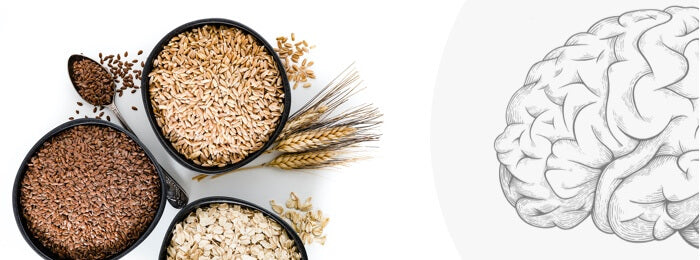It was a beautiful October day in San Antonio. I, of course, was sitting in a conference. I always tell myself that I will see more of the city that I am visiting, but I rarely do. The American College of Nutrition was hosting a conference on translational nutrition and I was on the edge of my seat.
During this particular conference, I was looking forward to a debate about micronutrients. The symposium centered around pro/con presentations and a discussion panel regarding chromium, vitamin D, zinc, and copper.1 While the general public swoons over celebrities and athletes, I was star-struck by these researchers. Giants in the field of micronutrients and authors of hundreds of peer-reviewed papers, Dr. Ananda S. Prasad lectured on zinc while Dr. George J. Brewer presented a web of evidence pointing to inorganic copper as a possible contribution to degeneration of nervous tissue. Dr. Brewer has a particular interest in Wilson's disease. He pointed out that a study published in the Proceedings of the National Academy of Sciences suggested that copper accumulation prevented the body (of mice) from removing a certain deleterious peptide from the brain by damaging low-density lipoprotein receptor-related protein.2 He also made the case that different reduction states of copper may have different effects on the body over the length of a lifetime which echoes some of his previously published material.3 However, that case was not made without dissent.
In an exciting world of nutrigenomics, metabolomics, the microbiome, and varies organ-organ "axes," it is refreshing to know that we do not have physiology entirely figured out, even when it comes to something so simple as micronutrients.The halls of the conference center bustled with conversation and spilled into the Riverwalk and Alamo area that evening. Could a critical mineral be dangerous? Researchers and clinicians alike were wondering. Either this convincing argument was correct or copper, which is an essential cofactor for oxidation-reduction reactions involving copper-containing oxidases,4 was a scapegoat for some other phenomena. Every nutrition student learns that copper and zinc have a competitive metabolic relationship. Could zinc or another mineral be contributing? Dr. Prasad presented and previously published that “in the developed countries nearly 30% of the elderly are zinc deficient” and that zinc deficiency or insufficiency plays a role in degenerative conditions.5 Another group reported that alterations in brain zinc status have been implicated in a wide range of neurological and degenerative phenomena.6 And now we start a proverbial rabbit hole of what research says what under various conditions!
In an exciting world of nutrigenomics, metabolomics, the microbiome, and varies organ-organ "axes," it is refreshing to know that we do not have physiology entirely figured out, even when it comes to something so simple as micronutrients. In fact, this material was revisited a year later at another translational nutrition conference in Orlando. The science continues to evolve. However, this evolving science poses a problem for clinicians who would appreciate the oxymoron of settled science.
A Closer Look at Copper
Let’s take a closer look at copper for a moment. Copper is a required mineral. Copper is a cofactor for enzymes that regulate energy production,7 iron metabolism,8 9 10 11 12 connective tissue maturation,13 and neurotransmission.14 Deficiency of copper may be the result of malnutrition, malabsorption,7 13 or excessive zinc intake15 and can be acquired16 or inherited.17
Copper deficiency can produce a myriad of symptoms.18 19 20 7 13 Even without frank deficiency, imbalance has been linked to impaired immune function,21 22 23 bone demineralization,24 25 and increased risk of cardiovascular disease.26
Genetic variations, also known as polymorphisms, in the ATP7B gene may modify the risk of degeneration.27 The protein, ATP7B, shuttles hepatic copper into the biliary tract. In Wilson's disease, impairment of this protein, results in excess free copper measurable in blood and accumulation in liver and brain. Being Dr. Brewer's special interest, he was very versed in this physiology. He noted that his belief was that excess copper was the major concern for most individuals and also acknowledged the critical role of copper in human health. However, as many scientific presentations and papers conclude, more research in this area is warranted.
Good dietary sources of copper include organ meats, shellfish, nuts, seeds, wheat-bran cereals, and whole-grain products.28 Those not consuming these foods may need supplementation.
If a practitioner is dealing with someone who has a family history of degeneration of central nervous tissue, they may want to consider how much copper is incorporated in their supplementation plan along with dietary considerations.
REFERENCES:
1. Brewer GJ et al. J Am Coll Nutr. 2015;34(2):167-74.
2. Singh I et al Proc Natl Acad Sci U S A. 2013 Sep 3;110(36):14771-6.
3. Brewer GJ. J Trace Elem Med Biol. 2012 Jun;26(2-3):89-92.
4. Prohaska JR. Adv Nutr. 2011;2(2):89-95.
5. Prasad AS. J Trace Elem Med Biol. 2014 Oct;28(4):364-71.
6. Prakash A et al. Fundam Clin Pharmacol. 2015 Apr;29(2):131-49.
7. Uauy R et al. Am J Clin Nutr. 1998;67(5 Suppl):952S-9S.
8. Vashchenko G et al. Nutrients. 2013;5(7):2289-313.
9. Meyer LA et al. J Biol Chem. 2001;276(39):36857-61.
10. Harris ZL et al. Proc Natl Acad Sci U S A. 1999;96(19):10812-7.
11. Kono S. Curr Drug Targets. 2012;13(9):1190-9.
12. Thackeray EW et al. J Clin Gastroenterol. 2011;45(2):153-8.
13. Turnlund JR. Modern Nutrition in Health and Disease. 10th ed. Philadelphia: Lippincott Williams & Wilkins; 2006:286-99.
14. Harris ED. Handbook of nutritionally essential minerals. New York: Marcel Dekker, Inc; 1997:231-73.
15. Rowin J et al. J Neurol Neurosurg Psychiatry. 2005;76(5):750-1.
16. Prodan CI et al. J Neurol Neurosurg Psychiatry. 2006;77(9):1092-3.
17. Tumer Z. Hum Mutat. 2013;34(3):417-29.
18. Harris ZL et al. Am J Clin Nutr. 1998;67(5 Suppl):972S-7S.
19. Bustos RI et al. Biochem Biophys Res Commun. 2013;437(3):426-32.
20. Peled T et al. Br J Haematol. 2002;116(3):655-61.
21. Heresi G et al. Nutr Res. 1985;5:1327-1334.
22. Kelley DS et al. Am J Clin Nutr. 1995;62(2):412-6.
23. Hodgkinson V et al. J Biol Chem. 2012;287(17):13549-55.
24. Eaton-Evans J et al. J Trace Elem Exp Med. 1996;9:87-94.
25. Strause L et al. J Nutr. 1994;124(7):1060-4.
26. Jones AA et al. Metabolism. 1997;46(12):1380-3.
27. Squitti R et al. J Alzheimers Dis. 2012;29(3):493-501.
28. Food and Nutrition Board, Institute of Medicine. Dietary reference intakes for vitamin A, vitamin K, boron, chromium, copper, iodine, iron, manganese, molybdenum, nickel, silicon, vanadium, and zinc. Washington, D.C.: National Academy Press; 2001:224-57.



